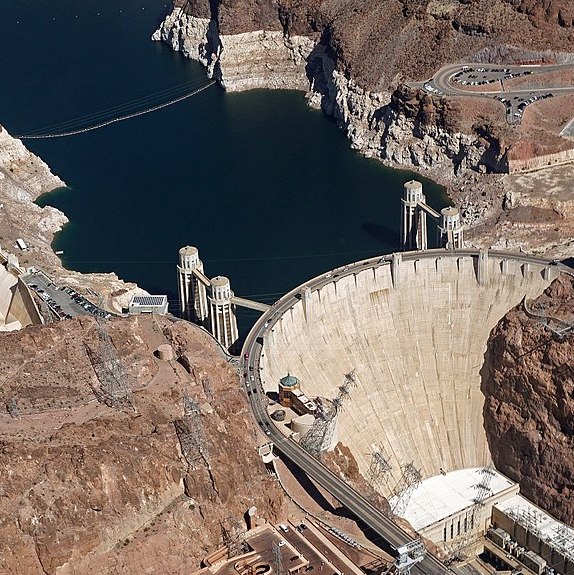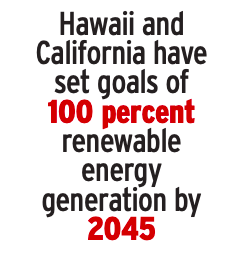AMERICAN COUNCIL OF ENGINEERING COMPANIES
Written by Gerry Donohue, ACEC’s senior communications writer
 While the U.S. economy has grown strongly over the past several years, public infrastructure spending has not kept pace. As a share of the U.S. gross domestic product (GDP), public infrastructure spending has trended down since the Great Recession, when it hit 2.69 percent in 2009; in 2017, it accounted for 2.28 percent of GDP.
While the U.S. economy has grown strongly over the past several years, public infrastructure spending has not kept pace. As a share of the U.S. gross domestic product (GDP), public infrastructure spending has trended down since the Great Recession, when it hit 2.69 percent in 2009; in 2017, it accounted for 2.28 percent of GDP.
In inflation-adjusted dollars, the high-water mark for public infrastructure spending came in 2003, when combined federal, state and local spending on water and transportation infrastructure topped $480 billion. Except for a brief upsurge during the Great Recession, public infrastructure funding has been flat or declining ever since. In 2017, it stood at $440.4 billion.
Funding for federal transportation and water in 2017 was $98.4 billion, about the same amount as provided in 1998. State and local infrastructure spending in 2017 totaled $342 billion, about the same level as 2002.
As a percentage, the federal share of infrastructure spending has bounced between 21.8 and 26.7 percent. Over the past several years, it has hovered near the bottom of the range.
Looking ahead, with the federal deficit exceeding $1 trillion in 2018 and little appetite for raising revenues in Congress or the administration, analysts doubt that the funding taps will open any time soon.
“The biggest constraint on congressional action on infrastructure right now is how we would pay for any major new federal investment,” says Debra Knopman, principal researcher at the RAND Corp.
To get a sense of what might happen in public infrastructure financing for transportation, water—and renewable energy— over the coming five to 10 years, Engineering Inc. spoke with leading analysts in those fields: Robert Puentes, president and CEO of the Eno Center for Transportation, an independent transportation think tank in Washington, D.C.; Knopman, lead author on the recent RAND report “Renewing America’s Infrastructure, An Agenda for Federal Transportation and Water Policy” on the future of water and transportation funding and finance; and Marlene Motyka, U.S. and global renewable energy leader and principal at Deloitte.
Transportation
“There will be some kind of federal transportation funding program coming out of Congress, but it is tough to imagine any massive federal infusion,” says Puentes. “There is the immediate challenge of a big short-term hole in the Highway Trust Fund, but I am confident they will be able to fill that with budgetary calisthenics.”
”In the longterm, he says that while the federal gas tax “is not going to go away, numerous studies have shown that it is unsustainable.” Coming to the fore, Puentes forecasts, will be a vehicle miles traveled system. “It is inevitable. Cars are becoming more fuel efficient, driving habits are changing. We need a system that adapts to that reality.”
Puentes expects state and local governments to shoulder an increasing share of the transportation funding burden. “They are not waiting around for Washington to come to the rescue,” he says. “States, cities and metropolitan areas are doing lots of different things, experimenting with partnerships and financing tools.”
Looking back at the November 2018 election when several hundred transportation measures were on ballots, Puentes says the trend is moving away from raising user fees and toward broader funding measures, such as sales taxes or bond measures.
Puentes does not see the private sector becoming a major player in infrastructure funding. “Public-private partnerships will increase, but they are not the solution for our transportation woes,” he says. “They are interested in some things, but there are an awful lot of things—such as upkeep and maintenance—they will not find attractive.”
At the same time, Puentes sees the public and private sector working more closely together to come up with innovative solutions to transportation problems. “We are already seeing it in transit-oriented developments and private investment in highway off-ramps to open up land,” he says.
One big change Puentes would like to see is the federal government incorporating transportation planning into the larger economic framework. “Every other developed country does it that way. They figure out what they want to accomplish and then determine transportation’s role. We need to widen the aperture of the discussion.”
Water
“Infrastructure for water and wastewater utilities is 96 percent funded at the state and local level,” says Knopman. “The federal government plays a relatively small role in direct funding.”
While the federal government may not be a big part of the funding, it has an oversized impact on the costs. Through the federal Safe Drinking Water Act and Clean Water Act—as well as state laws—water systems must comply with a host of water quality standards, some of which require major capital expenditures.
It is largely the ability of the nation’s 52,000 community water systems to meet those standards where the funding challenges arise. According to the U.S. Centers for Disease Control and Prevention, 80 percent of the 286 million Americans hooked up to community systems get their water from only 8 percent of the systems.
“The large systems have a lot of pipes to replace,” says Knopman, “but they generally have the rate base and asset management plans to recapitalize and modernize their systems.”
The smaller systems face a daunting challenge. They incur the high capital costs necessary to meet the federal and state standards, but do not have the service base to cover them.
The federal Water Infrastructure Finance and Innovation Act, which provides long-term loans to water and wastewater systems, provides some help.
“It is a very small slice of the pie right now,” says Knopman, “but I expect the program to grow because it is a relatively efficient mechanism for increasing the flow of capital into water systems.”
Knopman says the most positive step Congress could take would be to make changes to the primary financing vehicle for water systems, the $3.8 trillion tax-free municipal bond market.
“It is a very healthy market, but it primarily serves the investment needs of high-income people looking to reduce their tax liabilities,” she says. “These bonds are not appealing to other investors who would be most attracted to infrastructure, such as the big public pension funds. They are looking for returns on their investments, and the interest on municipal bonds is too low. They end up investing in infrastructure in other countries.”
One possible remedy would be changing the nature of the federal subsidy in the municipal bond market. “Rather than providing a tax break for the individual, the federal government could directly subsidize the local government, which could then issue bonds at a competitive market rate,” says Knopman.
This was the premise behind the Build America Bonds, which were introduced in the American Recovery and Reinvestment Act in 2009. “They were hugely popular, but they were only authorized for two years,” she says. “There are some issues to work out, but it would be a way to expand the market.”
Renewable Energy
 To a significant extent, renewable energy has outgrown its public funding, which was primarily in the form of federal tax credits.
To a significant extent, renewable energy has outgrown its public funding, which was primarily in the form of federal tax credits.
“The federal subsidies were very important, instrumental in putting renewable energy on a competitive footing,” says Motyka. “The subsidy is less of a crutch now. They still help, but there are more and more instances where renewables can compete without them.”
As a result, she does not expect the subsidies to be renewed and extended.
The public sector, however, still has a huge part to play in the renewable energy market, specifically through state renewable portfolio standard (RPS) programs.
“Over the past two decades, nearly 50 percent of the growth in the renewables sector was driven by those state mandates,” says Motyka. “Half of the states with RPS programs expect to reach them by 2021, and numerous states are deciding whether they want to increase them.”
For example, Hawaii and California have set goals of 100 percent renewable energy generation by 2045. “I do not see this momentum tailing off,” says Motyka.
Cities are also getting into the mix, with many smart city programs incorporating significant renewable components. “If a city wants to enhance quality of living and sustainability,” she says, “renewable energy is a great opportunity.”
Download full article (PDF): MarketWatch
Download full March/April 2019 issue of Engineering, Inc.
 About the American Council of Engineering Companies
About the American Council of Engineering Companies
www.acec.org
The American Council of Engineering Companies (ACEC) is the voice of America’s engineering industry.Council members – numbering more than 5,000 firms representing more than 500,000 employees throughout the country – are engaged in a wide range of engineering works that propel the nation’s economy, and enhance and safeguard America’s quality of life. These works allow Americans to drink clean water, enjoy a healthy life, take advantage of new technologies, and travel safely and efficiently. The Council’s mission is to contribute to America’s prosperity and welfare by advancing the business interests of member firms.
Tags: ACEC, American Council of Engineering Companies, Gerry Donohue, Knopman, Marketwatch, Motyka, Public infrastructure funding, Puentes, Renewable Energy






 RSS Feed
RSS Feed